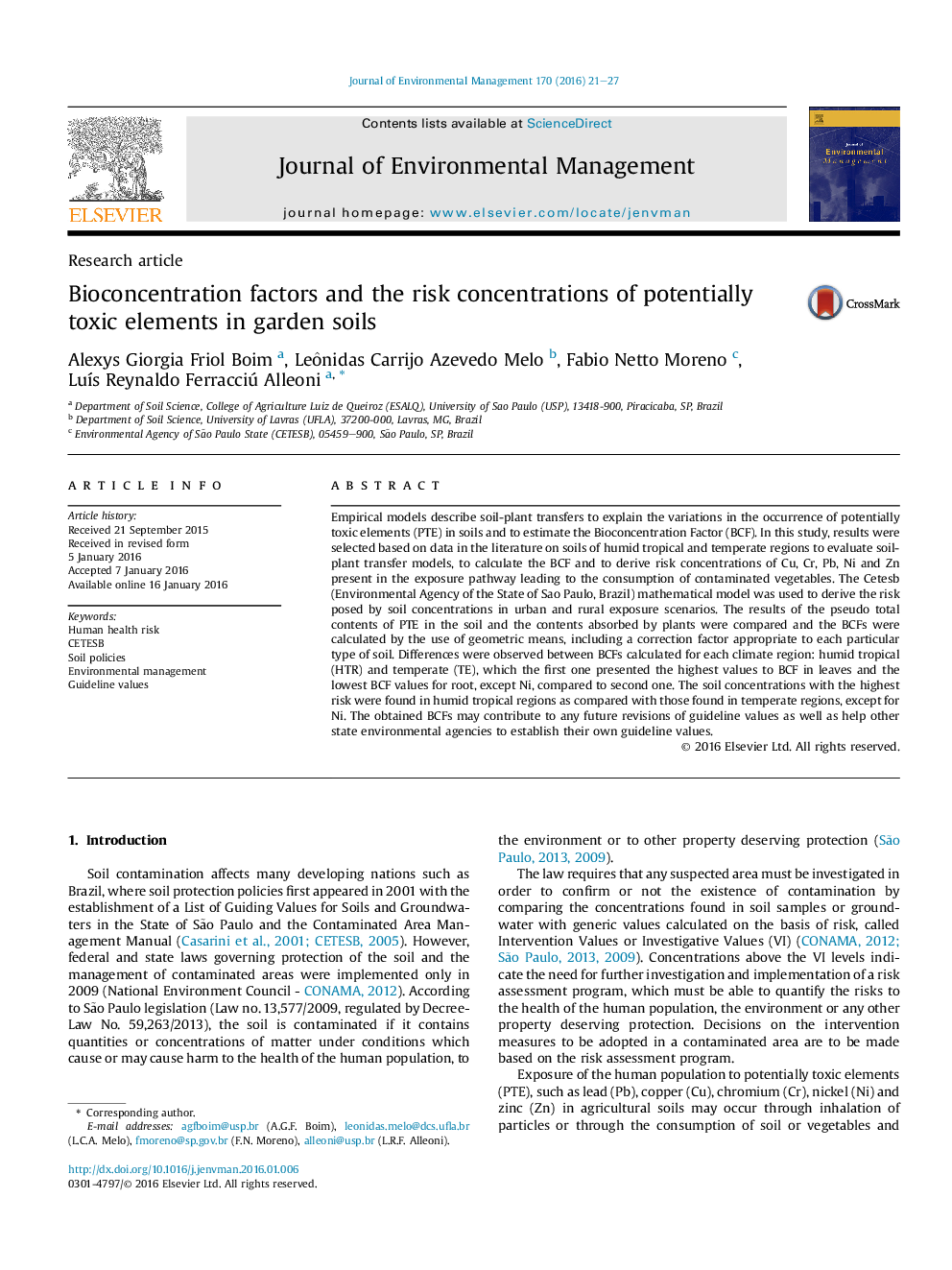| Article ID | Journal | Published Year | Pages | File Type |
|---|---|---|---|---|
| 7480788 | Journal of Environmental Management | 2016 | 7 Pages |
Abstract
Empirical models describe soil-plant transfers to explain the variations in the occurrence of potentially toxic elements (PTE) in soils and to estimate the Bioconcentration Factor (BCF). In this study, results were selected based on data in the literature on soils of humid tropical and temperate regions to evaluate soil-plant transfer models, to calculate the BCF and to derive risk concentrations of Cu, Cr, Pb, Ni and Zn present in the exposure pathway leading to the consumption of contaminated vegetables. The Cetesb (Environmental Agency of the State of Sao Paulo, Brazil) mathematical model was used to derive the risk posed by soil concentrations in urban and rural exposure scenarios. The results of the pseudo total contents of PTE in the soil and the contents absorbed by plants were compared and the BCFs were calculated by the use of geometric means, including a correction factor appropriate to each particular type of soil. Differences were observed between BCFs calculated for each climate region: humid tropical (HTR) and temperate (TE), which the first one presented the highest values to BCF in leaves and the lowest BCF values for root, except Ni, compared to second one. The soil concentrations with the highest risk were found in humid tropical regions as compared with those found in temperate regions, except for Ni. The obtained BCFs may contribute to any future revisions of guideline values as well as help other state environmental agencies to establish their own guideline values.
Related Topics
Physical Sciences and Engineering
Energy
Renewable Energy, Sustainability and the Environment
Authors
Alexys Giorgia Friol Boim, Leônidas Carrijo Azevedo Melo, Fabio Netto Moreno, LuÃs Reynaldo Ferracciú Alleoni,
